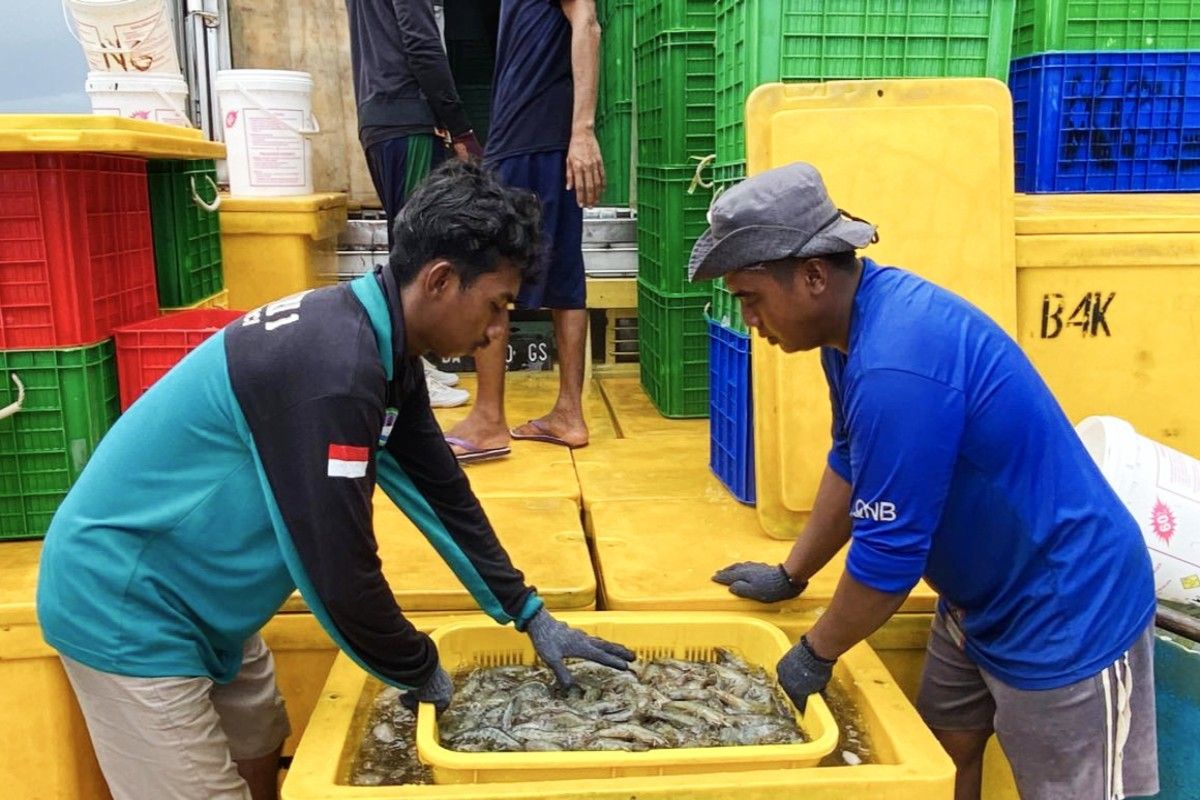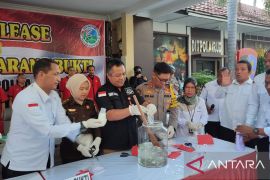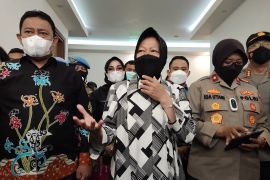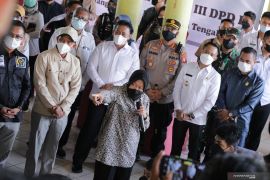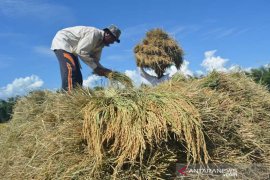The existing shrimp pond areas mapped by the Ministry of Home Affairs allow for shrimp pond cultivation based on the spatial planning plans of the province and Sukamara district, head of the Central Kalimantan Marine and Fisheries Service, Darliansyah, said in Palangka Raya on Wednesday.
"The development of the shrimp estate in Sei Raja village, Sukamara district, covering an area of approximately 40 hectares," he added.
"We hope (it) will contribute to the 2024 national shrimp export target of two million tons and meet food needs in the Nusantara capital city (IKN)," he continued.
So far, the development of the shrimp estate in Sukamara has been going smoothly and well, with the estate producing shrimp in line with expectations during several partial harvests.
A partial harvest has been carried out to reduce the density of the shrimp population in the ongoing cultivation cycle so that in the end, the shrimp growth can increase.
Partial harvests have been carried out several times, resulting in the production of more than 4 tons of shrimp, with some managing to reach 7.6 tons.
Related news: KKP modifies non-producing shrimp ponds into saline tilapia ponds
In addition, his party has collaborated with FPIK-IPB Tema in conducting training and for planting coastal vegetation in the form of mangroves, sea pines, and galam in the Shrimp Estate Berkah area.
"This is one of the commitments of the Central Kalimantan Governor Sugianto Sabran in developing a blue economy, or sustainable utilization of marine resources to improve the economy of coastal communities and maintain the health of the Central Kalimantan marine ecosystem," Darliansyah explained.
The Ministry of Maritime Affairs and Fisheries (KKP) has outlined five directions in the KKP 2025 policy that can be synchronized with Renja of the Provincial Marine and Fisheries Service.
The directions comprise expanding marine conservation areas; quota-based measured fishing; developing sustainable marine, coastal, and inland aquaculture; monitoring and controlling coastal areas and small islands; and cleaning up plastic waste in the sea through fishermen's participation movements.
The Letter of the Minister of Home Affairs No. 500.5.5/3825/Bang dated June 5, 2024, concerning Regional Support in Improving the Governance of the National Shrimp Industry was issued as a follow-up to the directions.
The Ministry of Home Affairs produced a map of the location of existing shrimp ponds in 2021 that will be overlaid on the Provincial and District Spatial Planning Plans (RTRW) to ensure the suitability of spatial utilization activities (KKPR).
To achieve the export target, the central government has requested support from local governments to ease shrimp pond licensing, identify and clarify the location of shrimp pond areas, devise inventory regional regulations related to shrimp pond levies, and provide assistance in implementing proper and environmentally friendly cultivation methods.
Related news: Indonesia opens access to alternative markets for shrimp exports
Related news: Ministry develops area-based modeling to boost aquaculture exports
Translator: Muhammad Arif Hidayat, Cindy Frishanti Octavia
Editor: Yuni Arisandy Sinaga
Copyright © ANTARA 2024
